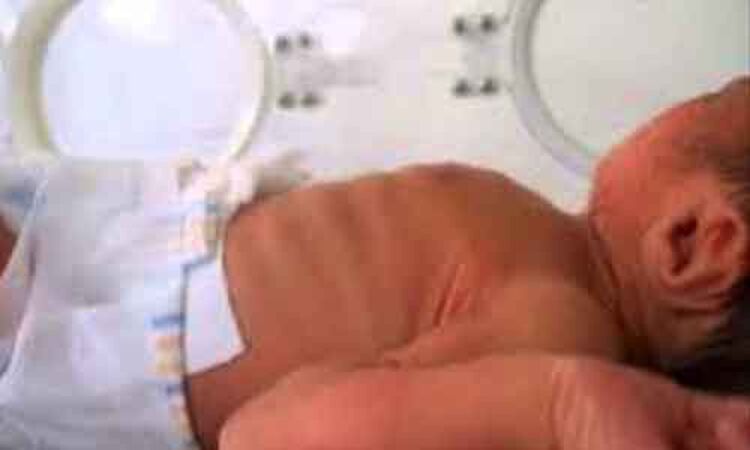- Home
- Medical news & Guidelines
- Anesthesiology
- Cardiology and CTVS
- Critical Care
- Dentistry
- Dermatology
- Diabetes and Endocrinology
- ENT
- Gastroenterology
- Medicine
- Nephrology
- Neurology
- Obstretics-Gynaecology
- Oncology
- Ophthalmology
- Orthopaedics
- Pediatrics-Neonatology
- Psychiatry
- Pulmonology
- Radiology
- Surgery
- Urology
- Laboratory Medicine
- Diet
- Nursing
- Paramedical
- Physiotherapy
- Health news
- Fact Check
- Bone Health Fact Check
- Brain Health Fact Check
- Cancer Related Fact Check
- Child Care Fact Check
- Dental and oral health fact check
- Diabetes and metabolic health fact check
- Diet and Nutrition Fact Check
- Eye and ENT Care Fact Check
- Fitness fact check
- Gut health fact check
- Heart health fact check
- Kidney health fact check
- Medical education fact check
- Men's health fact check
- Respiratory fact check
- Skin and hair care fact check
- Vaccine and Immunization fact check
- Women's health fact check
- AYUSH
- State News
- Andaman and Nicobar Islands
- Andhra Pradesh
- Arunachal Pradesh
- Assam
- Bihar
- Chandigarh
- Chattisgarh
- Dadra and Nagar Haveli
- Daman and Diu
- Delhi
- Goa
- Gujarat
- Haryana
- Himachal Pradesh
- Jammu & Kashmir
- Jharkhand
- Karnataka
- Kerala
- Ladakh
- Lakshadweep
- Madhya Pradesh
- Maharashtra
- Manipur
- Meghalaya
- Mizoram
- Nagaland
- Odisha
- Puducherry
- Punjab
- Rajasthan
- Sikkim
- Tamil Nadu
- Telangana
- Tripura
- Uttar Pradesh
- Uttrakhand
- West Bengal
- Medical Education
- Industry
25% of kids with repair of congenital diaphragmatic hernia can have abnormal pulmonary function: Study

According to a recent research, it has been observed that a quarter of children with repaired congenital diaphragmatic hernia showed abnormal pulmonary function.
The study is published in the BMC Pediatrics.
June-Young Koh and colleagues from the Departments of Pediatrics, Asan Medical Center, University of Ulsan College of Medicine, Seoul, Republic of Korea and Graduate School of Medical Science and Engineering, Korea Advanced Institute of Science and Technology (KAIST), Daejeon, Republic of Korea carried out this study to evaluate the long-term functional and structural pulmonary development in children with repaired congenital diaphragmatic hernia (CDH) and to identify the associated perinatal-neonatal risk factors.
Children with repaired congenital diaphragmatic hernia through corrective surgery who were born at gestational age ≥ 35 weeks were included in this analysis. Those who were followed for at least 5 years were subjected to spirometry and chest computed tomography for evaluation of their functional and structural growth.
Main bronchus diameters and lung volumes (total, left/right) were measured. According to total lung volume (TLV) relative to body surface area, children were grouped into TLV ≥ 50 group and TLV < 50 group and the associations with perinatal-neonatal factors were analyzed.
The findings revealed-
a. Of the 28 children (mean age, 6.2 ± 0.2 years) with left-sided CDH, 7 (25%) had abnormal pulmonary function, of whom 6 (87%) showed restrictive patterns.
b. All pulmonary functions except FEF25–75% were worse than those in matched healthy control group.
c. Worse pulmonary function was significantly associated with small head and abdominal circumferences at birth.
d. The mean TLV was 1339.1 ± 363.9 mL and LLV/TLV was 47.9 ± 2.5 mL.
e. Children with abnormal pulmonary function were more likely to have smaller lung volumes.
f. In multivariate analysis, abdominal circumference at birth was significantly associated with abnormal lung volume.
Hence, the authors concluded that "A quarter of children with repaired CDH showed abnormal pulmonary function. Small abdominal circumference at birth was associated with abnormal pulmonary function and lower TLV."
Dr. Nandita Mohan is a practicing pediatric dentist with more than 5 years of clinical work experience. Along with this, she is equally interested in keeping herself up to date about the latest developments in the field of medicine and dentistry which is the driving force for her to be in association with Medical Dialogues. She also has her name attached with many publications; both national and international. She has pursued her BDS from Rajiv Gandhi University of Health Sciences, Bangalore and later went to enter her dream specialty (MDS) in the Department of Pedodontics and Preventive Dentistry from Pt. B.D. Sharma University of Health Sciences. Through all the years of experience, her core interest in learning something new has never stopped. She can be contacted at editorial@medicaldialogues.in. Contact no. 011-43720751
Dr Kamal Kant Kohli-MBBS, DTCD- a chest specialist with more than 30 years of practice and a flair for writing clinical articles, Dr Kamal Kant Kohli joined Medical Dialogues as a Chief Editor of Medical News. Besides writing articles, as an editor, he proofreads and verifies all the medical content published on Medical Dialogues including those coming from journals, studies,medical conferences,guidelines etc. Email: drkohli@medicaldialogues.in. Contact no. 011-43720751


